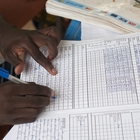study
Ouganda
Karamoja, Mid-North and West Nile Regions
2019
© Action Against Hunger USA
Final report 3 regions Northern Uganda

Brian Musaga Analystes

Lenka Blanárová

Grace Heymsfield
Managing organization
Action Against Hunger / Action Contre la Faim / Acción contra el Hambre
Action Against Hunger / Action Contre la Faim / Acción contra el Hambre
funder
UNICEF
UNICEF
Uganda experiences high rates of undernutrition, particularly stunting. Although there has been significant progress in addressing the problem of undernutrition, the rate of improvement has been slow, with a recorded decrease of stunting of approximately 20% since 1988. Its current level is categorized as “high” in terms of its public health significance. Of recent, the double burden of malnutrition has emerged, with over-nutrition (overweight and obesity) joining the ranks with under-nutrition in most vulnerable areas.
This Link NCA study covered 18 districts in Karamoja, Mid-North and West Nile sub-regions. The extensive community consultations were complemented by analyses of existing datasets of previously conducted Food Security and Nutrition Assessments conducted by WFP and UNICEF.
Across three regions of the study zone, limited access to water and non-optimal infant and young child feeding practices received the highest rating. Other highly ranked risk factors included a limited access to health facilities, limited access to income sources, low coping capacities and inadequate sanitation practices.
This Link NCA study covered 18 districts in Karamoja, Mid-North and West Nile sub-regions. The extensive community consultations were complemented by analyses of existing datasets of previously conducted Food Security and Nutrition Assessments conducted by WFP and UNICEF.
Across three regions of the study zone, limited access to water and non-optimal infant and young child feeding practices received the highest rating. Other highly ranked risk factors included a limited access to health facilities, limited access to income sources, low coping capacities and inadequate sanitation practices.
For further information





